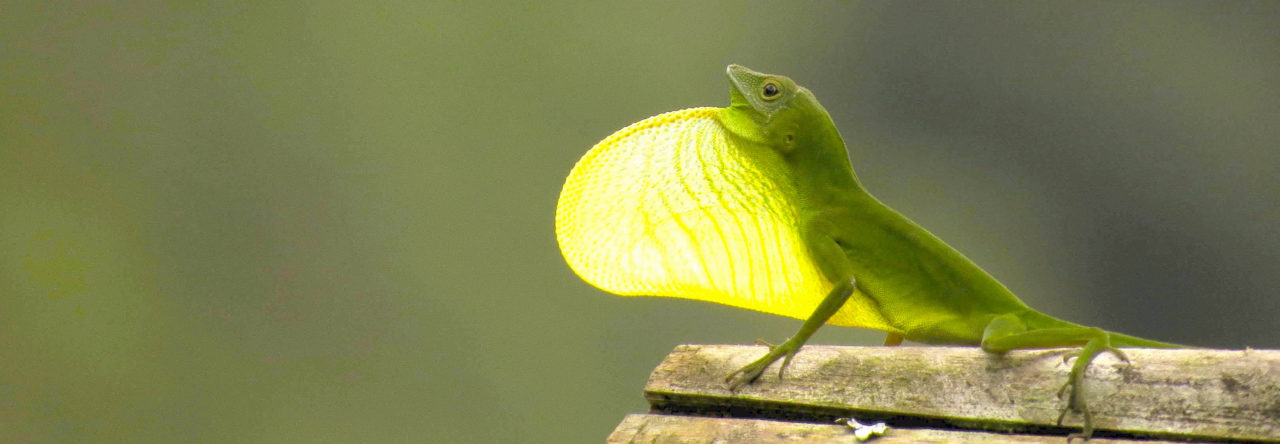
Lizard in an Evolutionary Tree's reworking of Williams' classic figure. Note that A. gundlachi is a trunk-ground anole, not, as indicated, a trunk-crown anole.
In this famous figure, Ernest Williams sketched out his view of how anole diversification occurred on the Greater Antilles, using Puerto Rico as an example. First, species diverge to use different structural habitat, producing the different ecomorphs. Subsequently, within-ecomorph divergence produces species that use the same structural habitat, but which occupy different climatic micro-climates, ranging from cool and moist rainforest to blazing hot and dry semi-desert. This two-stage pattern of evolution is displayed not only on Puerto Rico, but also on Cuba and Hispaniola (Jamaica, the most species deprived island, has little within ecomorph diversity).
In contrast to the plenitude of research in recent years on the adaptive basis of morphological differences among the ecomorphs, relatively little work has focused on the extent to which closely related species—members of the same ecomorph class—have adapted to occupying different microclimates. The 1970’s saw a fair amount of research documenting temperature tolerance levels of different species and, to a lesser extent, differences in the ability to survive in arid conditions (i.e., dehydration rates). This work confirmed what you might have predicted, that species in hotter climates can tolerate higher temperatures, whereas those in cooler areas can withstand lower temperatures. Similarly, species in arid regions dehydrate more slowly. Not much work of this sort has been conducted in the last 25 years.
In recent years, evolutionary biologists have come to realize that adaptive phenotypic plasticity is much more pervasive than previously recognized—many species have the capacity to produce different phenotypes depending on the circumstances in which they develop. Such a capacity, of course, is very beneficial, allowing an individual to be better suited to its environment. Whether such plasticity impedes or accelerates evolutionary change is currently a question of great interest.
This, of course, raises the question of whether species’ thermal physiology is malleable. In some types of organisms, such as fish, individuals exposed to warmer temperatures for some period of time can better withstand high temperatures than can organisms living in cooler climes. The extent to which anoles have this capacity has previously been little-investigated.
Gunderson et al. now report a study on A. cristatellus in Puerto Rico. They first demonstrate that populations in more xeric areas are able to withstand drying to a greater extent than populations from a wetter area. Then, they kept individuals from both populations in two different conditions, one in a humid environment in the lab, the other in a drier environment. They found that rates of dehydration did not vary in either population. Apparently, A. cristatellus does not exhibit phenotypic plasticity for resistance to desiccation. The only previous study of this type was on A. carolinensis in Florida, which found the opposite, that populations were able to acclimate to different moisture levels. Perhaps the fact that A. carolinensis occurs in a more temperate setting, and thus experiences greater variation in humidity throughout the year, explains why it has evolved this capacity, whereas A. cristatellus has not. An interesting possibility, clearly calling out for study of more species.
- Evolution in Real Time on Lizard Island - March 23, 2025
- Spider Snags Adult Anolis osa - March 22, 2025
- An Homage to the Green Anoles of New Orleans - March 21, 2025


Leave a Reply